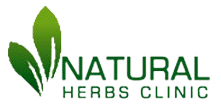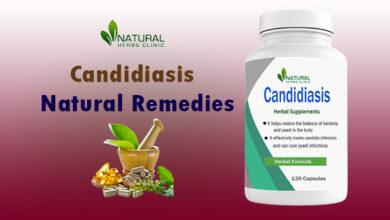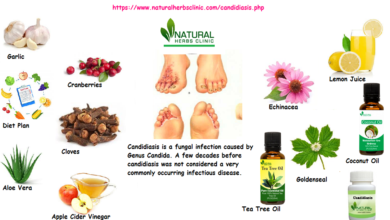Candidiasis and its Treatment with Natural Remedies
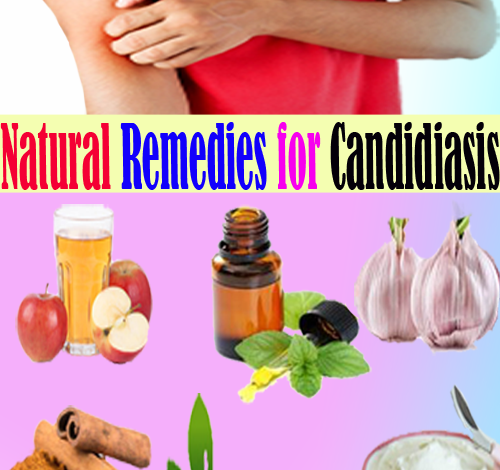
What is candidiasis of the skin?
Different types of bacteria and fungi live and grow on your skin. Most of them aren’t dangerous. Your body requires the majority of them to carry out normal functions. However, some can cause infections when they begin to multiply uncontrollably. Natural Remedies for Candidiasis have ability to provide relief to the skin from condition.
The Candida fungus is one of these potentially harmful organisms. When an overgrowth of Candida develops on the skin, an infection can occur. This condition is known as candidiasis of the skin or cutaneous candidiasis.
Candidiasis of the skin often causes a red, itchy rash to form, most commonly in the folds of the skin. This rash may also spread to other areas of the body. While the symptoms are often bothersome, they can usually be treated with improved hygiene and antifungal creams or powders.
What are the symptoms of candidiasis of the skin?
The main symptom of candidiasis of the skin is a rash. The rash often causes redness and intense itching. In some cases, the infection can cause the skin to become cracked and sore. Blisters and pustules may also occur.
The rash can affect various parts of the body, but it’s most likely to develop in the folds of the skin. This includes areas in the armpits, in the groin, between the fingers, and under the breasts. Candida can also cause infections in the nails, edges of the nails, and corners of the mouth.
Other conditions that may resemble candidiasis of the skin include:
ringworm
hives
herpes
diabetes-related skin conditions
contact dermatitis
seborrheic dermatitis
eczema
psoriasis
What causes candidiasis of the skin?
Candidiasis of the skin develops when the skin becomes infected with Candida. A small amount of Candida fungi naturally live on the skin. When this type of fungus begins to multiply uncontrollably, however, it can cause an infection. This may occur because of:
warm weather
tight clothing
poor hygiene
infrequent undergarment changes
obesity
the use of antibiotics that kill harmless bacteria that keep Candida under control
the use of corticosteroids or other medications that affect the immune system
a weakened immune system as a result of diabetes, pregnancy, or another medical condition
incomplete drying of damp or wet skin
Candida fungi thrive and grow in warm, moist areas. This is why the condition often affects areas where there are folds of skin.
Babies can also develop candidiasis of the skin, especially on the buttocks. A diaper tends to provide an ideal environment for Candida.
Candidiasis of the skin usually isn’t contagious. However, people with weakened immune systems may develop the condition after touching the skin of an infected person. Those with compromised immune systems are also more likely to develop a severe infection as a result of candidiasis.
How is candidiasis of the skin diagnosed?
Your doctor will likely be able to make a diagnosis simply by performing a physical examination. During the exam, they’ll inspect the location of your rash and the appearance of your skin.
Your doctor may also want to perform a skin culture before making a diagnosis of candidiasis of the skin. During a skin culture, your doctor will rub a cotton swab over the affected area and collect a skin sample. The sample will then be sent to a laboratory to be tested for the presence of Candida.
How is candidiasis of the skin treated?
Candidiasis of the skin can usually be prevented with home remedies, the most important of which is proper hygiene. Washing the skin regularly and drying the skin thoroughly can prevent the skin from becoming too moist. This is vital to keeping Candida infections at bay.
There are many lifestyle changes you can make to both prevent and treat a candidiasis infection.
Since abnormal blood sugar levels can contribute to the development of Candida infections, keeping your blood sugar under control may also help relieve symptoms. You may be able to lower your blood sugar by reducing the amount of sugar in your diet and by exercising for 30 minutes at least three times per week. If you have diabetes, it’s important to continue following your doctor’s instructions as you may need to start receiving oral medications or an increased amount of insulin.
In severe or persistent cases of candidiasis, your doctor may recommend using an antifungal cream or powder that can be applied to your skin. Over-the-counter antifungal creams that are often recommended include clotrimazole (Mycelex), miconazole (Monistat), and tioconazole (Vagistat). This type of treatment can kill Candida and reduce the spread of the infection.
Your doctor may prescribe an antifungal cream such as nystatin or ketoconazole if the over-the-counter treatments aren’t effective. If the infection has already spread to areas inside your body, such as your throat or mouth, you may need to take an oral antifungal to get rid of it.
Cutaneous candidiasis in babies
Cutaneous candidiasis (or candidiasis present on skin, nails, or hair) is a common occurrence in infants and babies.
Candidiasis-related diaper rash is one of the most frequently occurring candidiasis infections in babies. This rash is typically red with a well-defined border and normally lasts more than three days. Treatment includes changing the infant’s diaper frequently and allowing them to wear loose-fitting clothes on top of the diaper. Antifungal nystatin may be prescribed.
Oral thrush is another common occurrence in newborns and infants under 6 months old. Symptoms can include cracked skin in the corners of the mouth and whitish patches on the lips, tongue, or inside of the cheeks. Your doctor can prescribe an antifungal medication that’s applied to the infant’s mouth several times a day.
If candidiasis infection is left untreated, it can enter the bloodstream and spread. See your doctor if you believe your baby has candidiasis.
Cutaneous candidiasis in children
Although healthy children have strong immune systems, a 2010 study trusted Source found that the rate of topical fungal infections among children is increasing rapidly. Children sometimes develop candidiasis infections after receiving antibiotics that treat another condition. Children who suck their thumbs may be prone to developing candidiasis infections in or around their nail beds.
If your child is 9 months or older and has reoccurring thrush or skin infections, this could point to an underlying health concern, such as HIV or another problem with the immune system. Older children with frequent or severe skin infections should also be tested for diabetes.
What is the outlook for someone with candidiasis of the skin?
Candidiasis of the skin usually goes away with treatment, and most people make a full recovery without complications. If treated, the candidiasis typically resolves within one to two weeks. Without prescription treatment, recovery can take anywhere from a few days to a few weeks, depending on the severity of the infection.
Even with treatment, it is possible for the infection to return in the future. People with compromised immune systems, especially people who are undergoing chemotherapy and those with HIV or AIDS, are at a much higher risk of severe or life-threatening Candida infections. If you’re undergoing chemotherapy or you have HIV or AIDs and you develop severe throat pain, headache, or high fevers, you should see your doctor immediately.
You can treat candidiasis of the skin with improved hygiene, lifestyle changes, and some simple, yet effective Natural Remedies for Candidiasis.
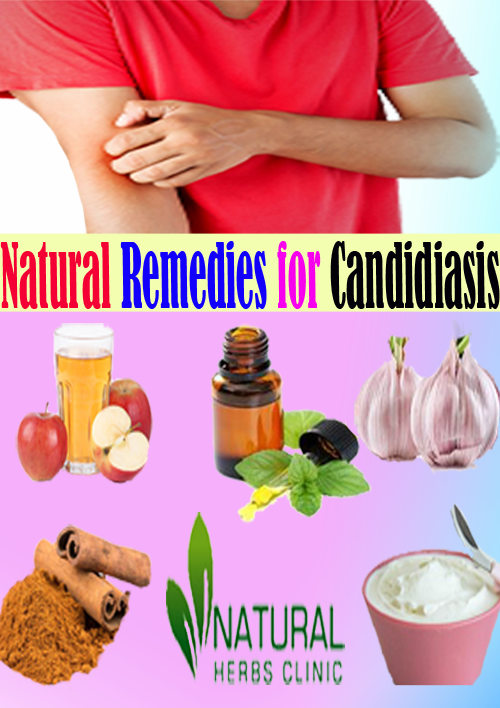
How to Deal with Cutaneous Candidiasis at Home
Natural Remedies for Candidiasis
Nourish Yourself with Coconut Oil
Coconut oil contains lauric acid and caprylic acid, which are responsible for its antifungal properties. With these properties, coconut oil helps in combating the yeast-like fungus responsible for candidiasis of the skin.
A 2011 study published in Acupuncture & Electro-Therapeutic Research throws light on the above-mentioned anti-infection properties of caprylic acid. (4)
Furthermore, a 2007 study published in the Journal of Medicinal Food reports that coconut oil helped kill species of yeast, including Candida. (5) Another study published in 2016 in Scientifica reports that coconut oil has a significant antifungal activity that is comparable to the antifungal drug ketoconazole. (6)
Utilizing coconut oil in Herbal Remedies for Candidiasis can be effective in killing the yeast when taken orally in small amounts as well as when applied topically, although more studies are needed to demonstrate this.
For oral use, add 1 tablespoon of extra-virgin coconut oil to your morning coffee or smoothie each day.
For topical use, apply warm coconut oil on the affected area and massage gently to allow the oil to penetrate deep into the skin. Do this several times a day.
Use Tea Tree Oil Topically
The antifungal properties of tea tree oil can help in the Herbal Treatment for Candidiasis of the skin. Not only does it help in killing the fungi responsible for the condition, but it also helps to soothe the inflamed skin.
A 2006 study published in Clinical Microbiology Reviews highlights the prized antifungal properties of tea tree oil. (7) Another study published in the Journal of Antimicrobial Chemotherapy in 2003 confirmed the therapeutic effectiveness of tea tree oil against fungi, particularly against C. albicans. However, the study was done on animals. (8)
Dilute 3 to 4 drops of organic Tea Tree Oil in 1 teaspoon of olive oil or sweet almond oil.
Rub the oil mixture over the affected skin.
Wait for 30 minutes, and then rinse it off using warm water.
Do this three or four times a day.
Garlic can be Beneficial
Garlic has a number of sulfur-containing compounds that give it natural antifungal properties that help fight candida infections.
A 2006 study highlights the antifungal property of ajoene (a compound in garlic) and its potential use in clinical trials to treat several fungal infections. (9)
For oral use, eat 2 or 3 cloves of raw garlic daily or along with salads and other preparations.
For topical use, apply freshly extracted garlic juice to the affected area. Wait for 5 minutes, and then rinse it off with water. Do this two or three times a day. Just be careful-garlic is potent and may cause an irritant or allergic contact dermatitis.
Alternatively, you can take garlic in the form of Herbal Supplements for Candidiasis or powder. Supplements should be taken only after consulting your physician.
A Probiotic Dose of Yogurt
Yogurt, especially Greek or other probiotic yogurt preparations that contain strains of the beneficial bacteria Lactobacillus acidophilus, helps to curb the growth of the candida fungi. The natural, unsweetened, and unflavored variety of yogurt is the most preferred choice, as it helps kill the yeast by producing hydrogen peroxide.
For oral use, eat 2 to 3 cups of probiotic yogurt daily for a few weeks.
For topical use, rub some probiotic yogurt on the affected area. Allow it to sit for 5 to 10 minutes, and then rinse it off thoroughly with warm water. Do this once or twice a day for a few days.
Curb the Infection with Apple Cider Vinegar
Apple cider vinegar contains enzymes that help restore the body’s pH and eliminate yeast overgrowth.
A 2018 study published in Science Reports concludes that undiluted (or mildly diluted) apple cider vinegar can prevent the growth of candida. (11)
Because high blood sugar contributes to candidiasis overgrowth, apple cider vinegar can be doubly effective due to its blood sugar-lowering properties, thereby keeping diabetes under control. Also, it is rich in several minerals and nutrients that give your immune system the much-needed boost it requires to fight off this infection. Use it in Home Remedies for Candidiasis to get rid of it naturally.
For oral use, mix 1 or 2 tablespoons of raw, unfiltered apple cider vinegar into 1 glass of water. Drink this solution two times a day.
For topical use, mix equal amounts of raw, unfiltered apple cider vinegar and water. Apply it externally on the affected skin. Leave it on for 30 minutes, and then rinse it off with water. Repeat this twice daily.
Reap the Benefits of Oregano Oil
Oregano oil, which is rich in the plant compounds carvacrol and thymol, is highly effective against infection-causing fungi. It inhibits the growth of the fungi by dehydrating and thereby killing them.
A 2001 study published in Molecular and Cellular Biochemistry highlights this antifungal property of oregano oil. (12)
Oregano oil is also beneficial for your immune system.
For topical use, mix 3 to 5 drops of oregano essential oil with 1 ounce of sweet almond oil, warmed coconut oil, or olive oil. Apply this oil blend to the affected area. Wait for 30 minutes, and then rinse it off with lukewarm water. Do this twice daily.
For oral use, mix 3 drops of oregano oil into 1 glass of water. Drink this twice daily for a few days to 1 week. Utilization of Oregano Oil in Natural Remedies for Candidiasis can be assisting in lessens the symptoms of the disease and provides relief from it naturally.
Give Cinnamon a Go
Cinnamon is also a very effective home staple that finds much use in Herbal Products for Candidiasis of the skin. It has potent antifungal properties that can control the growth of candida. (13)
In a 2013 study published in the Brazilian Archives of Biology and Technology, researchers analyzed the antifungal activity of cinnamon essential oil and found that it had acted on the strains of C. Albicans, C. tropicalis, and C. krusei. The antifungal activity was mainly due to the phytochemical component eugenol in it. (14)
For oral use, drink 1 to 2 cups of cinnamon tea daily. To make the tea, add a ½ teaspoon of cinnamon powder to 1½ cups of water and boil it for 5 minutes. Strain and drink it. You can also add a little lemon juice.
For topical use, dilute a few drops of cinnamon oil in 1 tablespoon of extra-virgin olive oil or coconut oil. Apply this oil blend to the affected area. Leave it on for 10 to 15 minutes, and then rinse it off. Do this once daily for a few days.
Caution: Pregnant women should not use
Topical Use of Boric Acid can help
Boric acid is an oft-recommended home treatment for recurrent vulvovaginal candidiasis due to its powerful antiseptic, antifungal, and antiviral properties. It has shown encouraging results and is found to be effective against both Candida albicans and the more resistant Candida glabrata yeast strains.
Resource Articles
https://www.onlymyhealth.com/how-to-treat-yeast-infections-at-home-1609935556
Related Article
